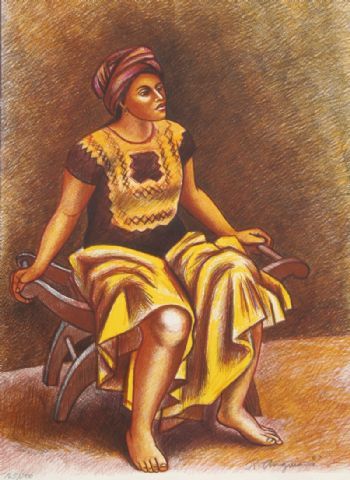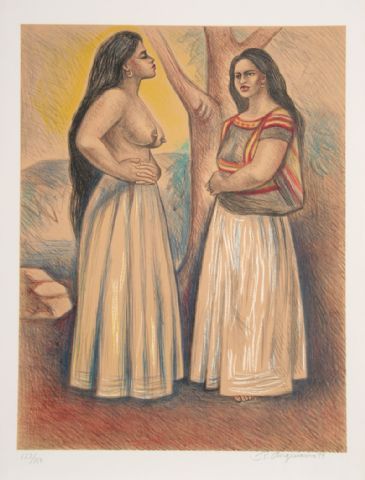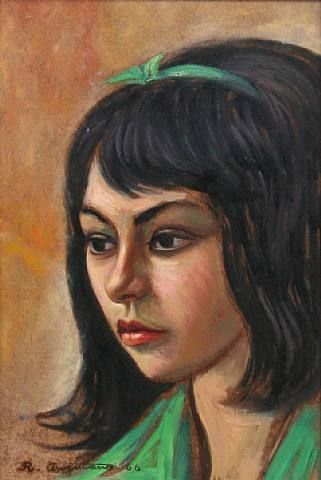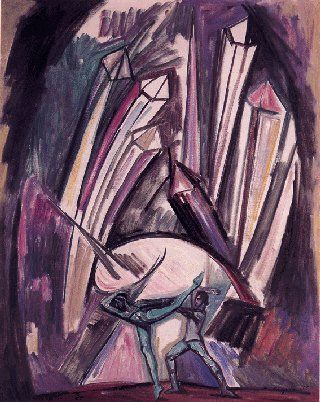Raúl Anguiano (1915-2006)
Get a Raúl Anguiano (1915-2006) Certificate of Authenticity for your painting (COA) for your Raúl Anguiano (1915-2006) drawing.
For all your Raúl Anguiano (1915-2006) artworks you need a Certificate of Authenticity (COA) in order to sell, to insure or to donate for a tax deduction.
Getting a Raúl Anguiano (1915-2006) Certificate of Authenticity (COA) is easy. Just send us photos and dimensions and tell us what you know about the origin or history of your Raúl Anguiano (1915-2006) painting or drawing.
If you want to sell your Raúl Anguiano (1915-2006) painting or drawing use our selling services. We offer Raúl Anguiano (1915-2006) selling help, selling advice, private treaty sales and full brokerage.
We have been authenticating Raúl Anguiano (1915-2006) and issuing certificates of authenticity since 2002. We are recognized Raúl Anguiano (1915-2006) experts and Raúl Anguiano (1915-2006) certified appraisers. We issue COAs and appraisals for all Raúl Anguiano (1915-2006) artworks.
Our Raúl Anguiano (1915-2006) paintings and drawings authentications are accepted and respected worldwide.
Each COA is backed by in-depth research and analysis authentication reports.
The Raúl Anguiano (1915-2006) certificates of authenticity we issue are based on solid, reliable and fully referenced art investigations, authentication research, analytical work and forensic studies.
We are available to examine your Raúl Anguiano (1915-2006) painting or drawing anywhere in the world.
You will generally receive your certificates of authenticity and authentication report within two weeks. Some complicated cases with difficult to research Raúl Anguiano (1915-2006) paintings or drawings take longer.
Our clients include Raúl Anguiano (1915-2006) collectors, investors, tax authorities, insurance adjusters, appraisers, valuers, auctioneers, Federal agencies and many law firms.
We perform Raúl Anguiano art authentication, appraisal, certificates of authenticity (COA), analysis, research, scientific tests, full art authentications. We will help you sell your Raúl Anguiano or we will sell it for you.
Raúl Anguiano was born in the city of Guadalajara, Mexico. Anguiano’s interest in art began in his childhood, as he would draw family photographs taken during the Mexican Revolution.

Emilia, Sitting, 1987

Dialog, 1994
Anguiano studied at the Free School of Painting at the Jalisco State Museum. In school Anguiano drew from life and copied prints from the Italian Renaissance. Anguiano was nicknamed “Rafaelito”.

Portrait, 1966
At the young age of thirteen Anguiano met artist José Vizcarra, who realized Anguiano’s talent and tutored him free of charge.

Portrait of a Girl, 1968
At the age of fifteen, Anguiano became apart of an art collective called Bandera de Provincias. The collective published a periodical and organized exhibitions and lectures. Bandera de Provincias played an important role in forming Anguiano’s views on art and social issues. Anguiano was exposed to the writing of Giamcomo Leopardi, Machiavelli and Romain Rolland.

Untitled, 1945
Anguiano’s family suffered financially when his father sacrificed a salary to engage in politics. Anguiano began working before the age of twenty, teaching in Guadalajara’s primary schools. Anguiano could not work in a studio full-time, but continued to work and paint with friends.

Flower of Stone Ballet, 1979
In 1934 Anguiano lost his teaching job and moved to Mexico City to live with other family members. Here, Anguiano befriended revolutionaries and began to adopt radical views.
Anguiano saw the work of Diego Rivera and other muralists who were involved in workers’ movements. He initiated his own career as a muralist in 1936. Anguiano painted both murals in the Revolutionary Confederation of Labor in the state of Michoacán. He was commissioned to paint many murals for the National Chamber of Commerce and the National Museum of Anthropology in Mexico.
While working as a muralist, Anguiano continued to create paintings, drawings, prints and political banners. Anguiano often made work inspired by the circuses and cabarets he would attend.
Anguiano joined the Federation of Writers and Proletarian Artists (FEAP), and later the League of Writers and Revolutionary Artists (LEAR). The groups published books, put on exhibitions and worked towards social reform. The creation of LEAR later led to the founding of the Popular Graphics Workshop, which supported workers and peasants, worked for fair salaries, education, and anti-war efforts.
In 1935 Anguiano held his first solo exhibition at the Palace of Fine Arts in Mexico City. Anguiano’s popularity grew quickly, and he continued to exhibit internationally, including shows in Brazil, Colombia, Chile, Cuba, France, Israel, Italy, Russia, Japan and the United States.
